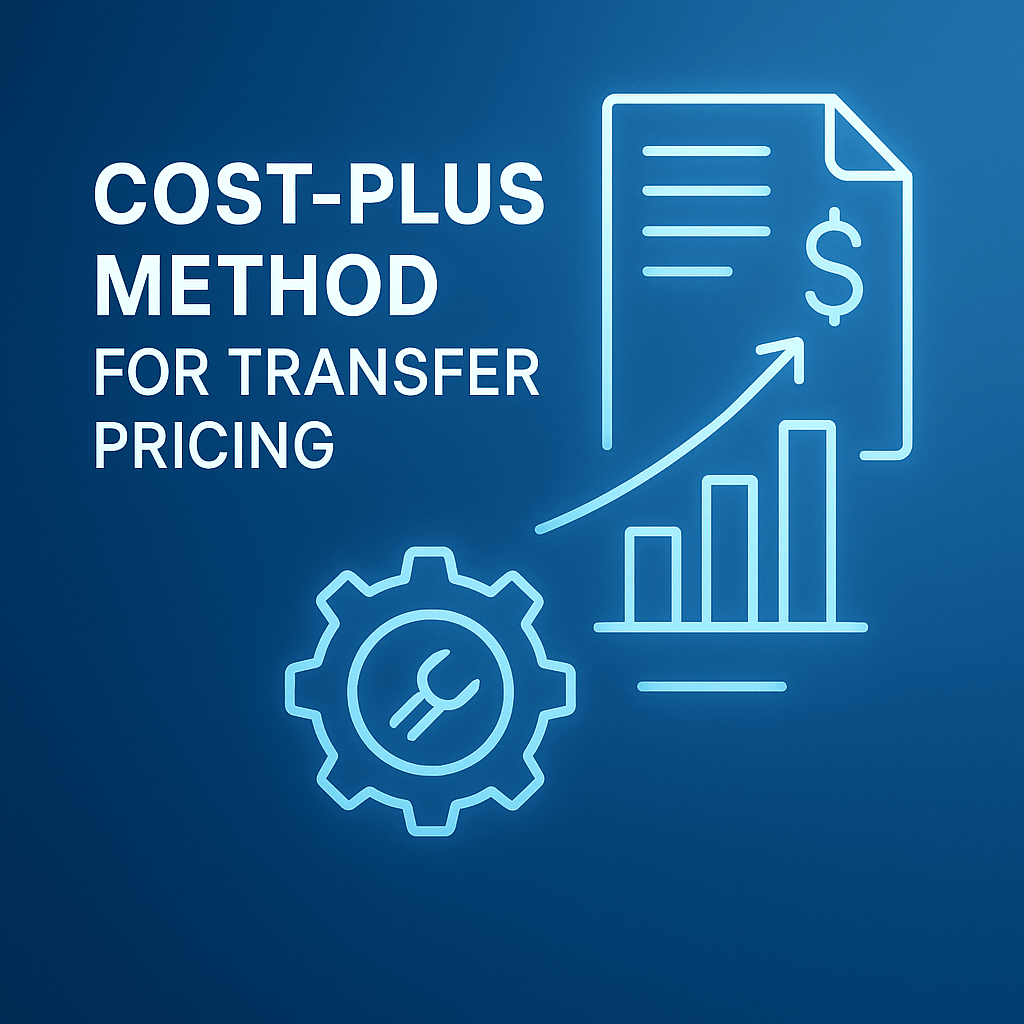The cost plus method
When conducting a transfer pricing study, it’s essential to select the most appropriate comparison method to demonstrate that the prices set in a controlled transaction (i.e., a transaction between related parties) are at arm’s length. The Organization for Economic Cooperation and Development (OECD) outlines various methods for this purpose in its transfer pricing guidelines, categorizing them into two distinct groups: traditional transaction methods and transaction profit methods. The Cost Plus method falls within the category of traditional transaction methods.
This method compares the gross profit mark up in a controlled transaction to that of a similar uncontrolled transaction.
The cost-plus method is commonly used in industries in which is common to set the price by a adding a mark-up to the cost of goods sold. At times when transactions involve tangible property, manufacturing or assembling activities and relatively simple service are provided, the cost plus method will be usually used.
This method is particularly valuable in cases where semi-finished goods are sold between related parties, where the related parties have joint facility agreements, or where there are long-term buy-and-supply arrangements or the provision of services.
How does the Cost Plus Method work?
First, it’s crucial to identify comparable transactions. Ideally, transactions between the supplier and other unrelated parties (i.e., internal comparables) will be used for this purpose. External transactions involving other unrelated parties can also serve as a guide. Note that a comprehensive analysis should be performed to ensure that the circumstances of the transactions are indeed comparable.
Next, the markup of the comparable transactions should be measured.
Afterward, the Cost of Goods Sold (COGS) for the supplier must be calculated. This figure is then multiplied by the markup to determine the transfer pricing, or the arm’s-length price.
According to the OECD guidelines, when applying the Cost Plus method, a controlled transaction and an uncontrolled transaction are deemed comparable if one of the following conditions is met:
- Differences between the compared transactions or companies do not affect the determination of the cost-plus markup in an open market.
Reasonable adjustments can be made to eliminate the benefits that might arise due to the differences mentioned above.
Example of the application of the cost plus method
Let’s look at a simple example to illustrate the application of the Cost Plus method.
Suppose we have a multinational enterprise (MNE) called Company A, which operates in Country X. Additionally, there is a related party, Company B, operating in Country Y, and an unrelated party, Company C, also conducting business in Country Y.
Company A specializes in manufacturing bags for Company B. Company C also manufacture bags and operates under conditions similar to those of Company A, , earning a markup of 15-20% on its costs.
After conducting a comprehensive comparability analysis, it is determined that these transactions are suitably comparable. The comparable markups identified align with the cost basis employed by Company C, serving as a foundation for implementing the Cost Plus method. Based on this, we can now proceed to calculate the selling price that Company A should set for its sales to Company B.
Let’s assume that the COGS for producing a single bag by Company A amounts to 100$. The calculation unfolds as follows:
Cost of COGS for comapny A = 100$
+ Gross profit mark up (15-20%) = 15$-20$
Arm’s length price = 115$-120$
In essence, the determined arm’s length price for Company A’s sales to Company B ranges between 115$ and 120$.
Advantages
Like all transfer pricing methods, the Cost Plus method has its strengths and weaknesses that require careful consideration before application. No single method is perfect for every scenario; therefore, your choice should be based on a case-by-case analysis.
Some of the advantages of the cost plus method are:
- Relatively Accessible Data – the Cost Plus method utilizes internal costs– i.e., costs that are directly related to the manufacturing or purchasing of an item or activity. This information is generally readily accessible to the enterprise.
- Comparability of Functions Preformed – when applying the Cost Plus method, the comparability of the functions preformed is more crucial than the comparability of the products. This is because the functions preformed have a larger impact on the margins.
Disadvantages
Some of the disadvantages or weaknesses of the Cost Plus method include:
- Cost Determination – First, there are challenges in accurately determining the costs. While enterprises need to cover their costs to sustain their operations, these expenses may not necessarily dictate the appropriate profit for a specific year. Although companies often set prices based on cost, there are times when price and cost are not directly correlated.
- Cost Allocation Issues – The costs considered in the Cost Plus method are those incurred by the supplier of goods or services. This can create complications in allocating some expenses between the supplier and the purchaser. For example, some costs may be borne by the purchaser, not the supplier, thus lowering the basis for determining costs.
- One-Sided Analysis – The Cost Plus method involves a one-sided analysis, focusing solely on the manufacturer or the service provider. This may not provide a complete picture of the transaction dynamics between the related parties.
Considerations when applying the Cost Plus Method
Some points should be kept in mind when applying the cost plus method, including,
- Comparable Cost Basis – It’s essential to ensure that a similar markup is applied to a comparable cost basis when using this method.
- Accounting Consistency – One critical aspect of comparability is accounting consistency. If there are differences in accounting practices between the controlled and uncontrolled transactions, adjustments should be made to the data. This ensures that the same types of costs are considered in both sets of transactions.
- Different Expense Types – It’s important to take into account differences in types and levels of expenses. Operating and non-operating expenses may include financial costs tied to the functions performed and the risks assumed by the parties or transactions. Recognizing these differences may necessitate adjustments or additional steps. For example, if costs are associated with functions different from those being tested, separate compensation should be provided for them.
- Applying Historical Costs – Historical costs should be applied to individual units of production. In some instances, costs may fluctuate over time, such as labor or material costs. In these cases, it may be more appropriate to apply an average cost rather than an annual cost. Averaging costs might also be relevant in situations involving fixed assets and production or processing of multiple products in varying quantities. Additionally, for a more accurate profit estimation, consider including replacement and marginal costs when they can be calculated.
Our firm specializes in international taxation and provides our clients with a comprehensive assistance for their transfer pricing needs. To schedule a consolation call with our team, click here.









